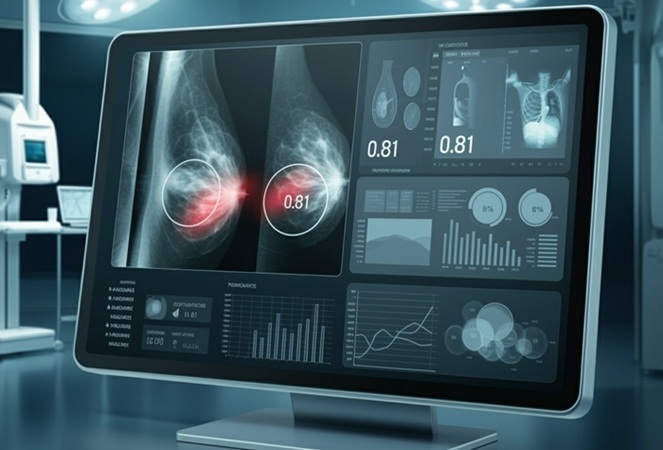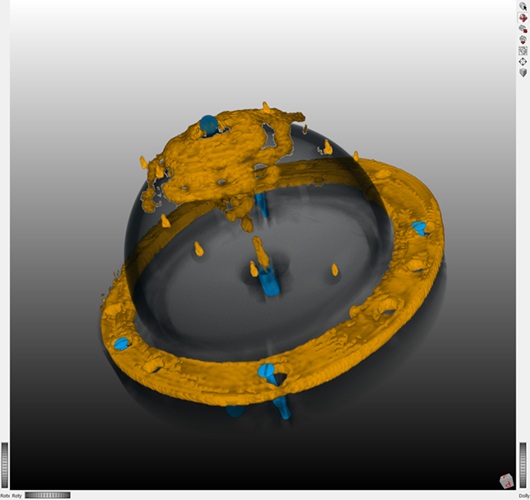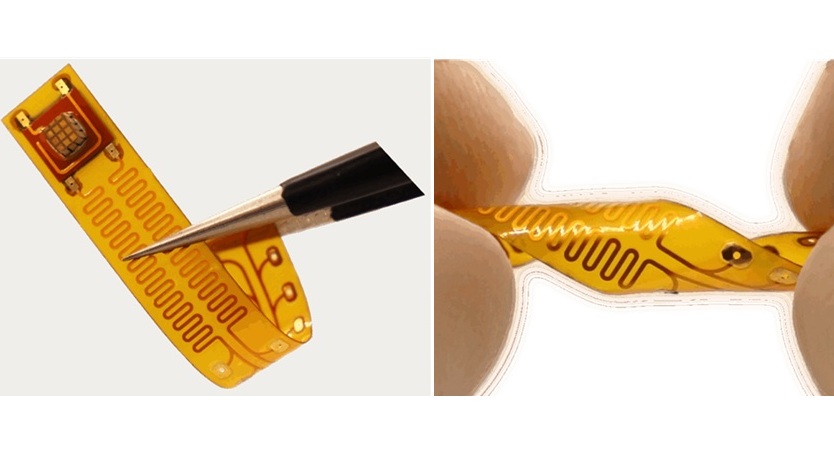CT as Accurate as Angiography in Detecting Coronary Artery Disease Non-Invasively
|
By MedImaging International staff writers Posted on 07 Mar 2022 |

A study by researchers from 31 European clinical institutions suggests that cardiac computed tomography (CT) offers a similar level of diagnostic accuracy as catheterization in patients with suspected coronary artery disease (CAD), in addition to being associated with a lower risk of complications.
The study, led by researchers at Charité-Universitätsmedizin Berlin (Berlin, Germany), was a part of the DISCHARGE trial and aimed to test cardiac CT as a non-invasive alternative to catheterization, the current standard diagnostic test for intermediate-risk patients. CAD is common across the globe and is one of the leading causes of death in developed countries and aging populations. The disease is associated with impaired blood flow in the coronary arteries, i.e., the arteries which supply oxygen to the heart. Chest pain, shortness of breath and fatigue with activity can all be indicators of either chronic or acute disease, both of which are associated with an increased risk of heart attack, stroke and even cardiovascular death - examples of what are referred to ‘major adverse cardiovascular events’. Symptoms of CAD are caused by deposits inside the artery walls which build up over many years.
The current standard diagnostic test for coronary artery disease is a minimally invasive procedure known as coronary angiography (or cardiac catheterization). This test shows if the coronary arteries supply a sufficient amount of blood or whether blood flow is impaired by arterial narrowing. Any narrowing detected in this manner can be treated during the procedure itself, through the use of small, inflatable balloons and extremely thin mesh tubes known as stents, which are used to prop open the newly widened blood vessels. More than 3.5 million of these procedures are carried out in European catheterization laboratories (or cath labs) every year, and numbers continue to increase. Approximately two million – i.e., significantly more than half – of these minimally invasive procedures do not involve immediate treatment in the cath lab. In these cases, the procedure is able to rule out narrowed or blocked coronary arteries.
The main question addressed by the DISCHARGE trial was whether the low-risk, non-invasive coronary CT method can provide a safe alternative to catheterization in certain patients with suspected CAD. In order to test the effectiveness of both of these diagnostic imaging techniques in patients with stable chest pain, the project followed more than 3,500 patients for a duration of four years. Using a process known as randomization, patients were assigned by chance to either computed tomography or cardiac catheterization. If their initial evaluation ruled out obstructive coronary artery disease, participants were discharged back to their referring physician for further treatment – a step which gave the trial its name: DISCHARGE. Patients who were diagnosed as having the disease were managed in accordance with European guidelines at the time of the study.
For their overall analysis, the researchers also included criteria such as improvements in chest pain and quality of life over the course of the trial. By helping to reduce the large number of catheterization procedures being performed, this new strategy could also help relieve pressure on health care systems. The Federal Joint Committee (G-BA) has initiated a formal assessment to evaluate the benefits of cardiac CT. As a next step, the trial’s method for estimating a person’s clinical risk of having coronary artery disease will need to be further evaluated to determine whether it can help to improve routine care.
“The trial confirmed that a CT-based management is safe in patients with stable (i.e., non-acute) chest pain and suspected coronary artery disease,” said Prof. Dr. Marc Dewey, Vice Chair of the Department of Radiology on Campus Charité Mitte. “Among the patients referred for cardiac catheterization and included in this trial, the risk of major adverse cardiovascular events was found to be similar in both the CT and catheterization groups, occurring in 2.1% and 3.0% of patients, respectively. The incidence of major procedure-related complications was found to be four-times lower in patients managed with an initial CT strategy.”
“CT may represent a safe alternative to cardiac catheterization in specific patients. In patients with a low risk of CAD diagnosis, CT can help prevent an unnecessary catheterization procedure,” said Prof. Dr. Henryk Dreger, Deputy Head of Charité’s Department of Cardiology and Angiology, who was responsible for monitoring the catheterization lab procedures performed at Charité. “Now that CT has been standardized and quality-tested as part of the DISCHARGE trial, this method could be made more widely available as part of the routine clinical care of people with intermediate CAD risk.”
Related Links:
Charité-Universitätsmedizin Berlin
Latest General/Advanced Imaging News
- Cutting-Edge Angio-CT Solution Offers New Therapeutic Possibilities
- Extending CT Imaging Detects Hidden Blood Clots in Stroke Patients
- Groundbreaking AI Model Accurately Segments Liver Tumors from CT Scans
- New CT-Based Indicator Helps Predict Life-Threatening Postpartum Bleeding Cases
- CT Colonography Beats Stool DNA Testing for Colon Cancer Screening
- First-Of-Its-Kind Wearable Device Offers Revolutionary Alternative to CT Scans
- AI-Based CT Scan Analysis Predicts Early-Stage Kidney Damage Due to Cancer Treatments
- CT-Based Deep Learning-Driven Tool to Enhance Liver Cancer Diagnosis
- AI-Powered Imaging System Improves Lung Cancer Diagnosis
- AI Model Significantly Enhances Low-Dose CT Capabilities
- Ultra-Low Dose CT Aids Pneumonia Diagnosis in Immunocompromised Patients
- AI Reduces CT Lung Cancer Screening Workload by Almost 80%
- Cutting-Edge Technology Combines Light and Sound for Real-Time Stroke Monitoring
- AI System Detects Subtle Changes in Series of Medical Images Over Time
- New CT Scan Technique to Improve Prognosis and Treatments for Head and Neck Cancers
- World’s First Mobile Whole-Body CT Scanner to Provide Diagnostics at POC
Channels
Radiography
view channel
AI Hybrid Strategy Improves Mammogram Interpretation
Breast cancer screening programs rely heavily on radiologists interpreting mammograms, a process that is time-intensive and subject to errors. While artificial intelligence (AI) models have shown strong... Read more
AI Technology Predicts Personalized Five-Year Risk of Developing Breast Cancer
Breast cancer remains one of the most common cancers among women, with about one in eight receiving a diagnosis in their lifetime. Despite widespread use of mammography, about 34% of patients in the U.... Read moreMRI
view channel
AI-Assisted Model Enhances MRI Heart Scans
A cardiac MRI can reveal critical information about the heart’s function and any abnormalities, but traditional scans take 30 to 90 minutes and often suffer from poor image quality due to patient movement.... Read more
AI Model Outperforms Doctors at Identifying Patients Most At-Risk of Cardiac Arrest
Hypertrophic cardiomyopathy is one of the most common inherited heart conditions and a leading cause of sudden cardiac death in young individuals and athletes. While many patients live normal lives, some... Read moreUltrasound
view channel
Non-Invasive Ultrasound-Based Tool Accurately Detects Infant Meningitis
Meningitis, an inflammation of the membranes surrounding the brain and spinal cord, can be fatal in infants if not diagnosed and treated early. Even when treated, it may leave lasting damage, such as cognitive... Read more
Breakthrough Deep Learning Model Enhances Handheld 3D Medical Imaging
Ultrasound imaging is a vital diagnostic technique used to visualize internal organs and tissues in real time and to guide procedures such as biopsies and injections. When paired with photoacoustic imaging... Read moreNuclear Medicine
view channel
New Camera Sees Inside Human Body for Enhanced Scanning and Diagnosis
Nuclear medicine scans like single-photon emission computed tomography (SPECT) allow doctors to observe heart function, track blood flow, and detect hidden diseases. However, current detectors are either... Read more
Novel Bacteria-Specific PET Imaging Approach Detects Hard-To-Diagnose Lung Infections
Mycobacteroides abscessus is a rapidly growing mycobacteria that primarily affects immunocompromised patients and those with underlying lung diseases, such as cystic fibrosis or chronic obstructive pulmonary... Read moreGeneral/Advanced Imaging
view channel
Cutting-Edge Angio-CT Solution Offers New Therapeutic Possibilities
Maintaining accuracy and safety in interventional radiology is a constant challenge, especially as complex procedures require both high precision and efficiency. Traditional setups often involve multiple... Read more
Extending CT Imaging Detects Hidden Blood Clots in Stroke Patients
Strokes caused by blood clots or other mechanisms that obstruct blood flow in the brain account for about 85% of all strokes. Determining where a clot originates is crucial, since it guides safe and effective... Read more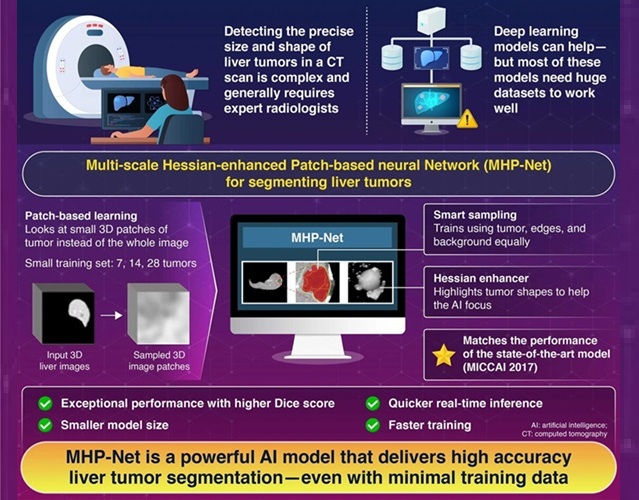
Groundbreaking AI Model Accurately Segments Liver Tumors from CT Scans
Liver cancer is the sixth most common cancer worldwide and a leading cause of cancer-related deaths. Accurate segmentation of liver tumors is critical for diagnosis and therapy, but manual methods by radiologists... Read more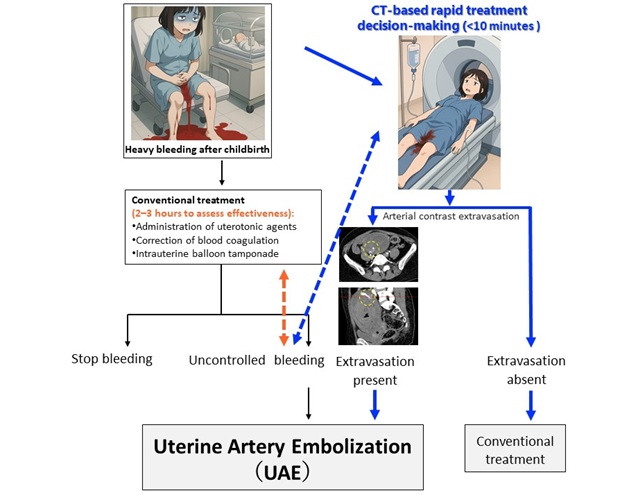
New CT-Based Indicator Helps Predict Life-Threatening Postpartum Bleeding Cases
Postpartum hemorrhage (PPH) is a leading cause of maternal death worldwide. While most cases can be controlled with medications and basic interventions, some become life-threatening and require invasive treatments.... Read moreImaging IT
view channel
New Google Cloud Medical Imaging Suite Makes Imaging Healthcare Data More Accessible
Medical imaging is a critical tool used to diagnose patients, and there are billions of medical images scanned globally each year. Imaging data accounts for about 90% of all healthcare data1 and, until... Read more
Global AI in Medical Diagnostics Market to Be Driven by Demand for Image Recognition in Radiology
The global artificial intelligence (AI) in medical diagnostics market is expanding with early disease detection being one of its key applications and image recognition becoming a compelling consumer proposition... Read moreIndustry News
view channel
GE HealthCare and NVIDIA Collaboration to Reimagine Diagnostic Imaging
GE HealthCare (Chicago, IL, USA) has entered into a collaboration with NVIDIA (Santa Clara, CA, USA), expanding the existing relationship between the two companies to focus on pioneering innovation in... Read more
Patient-Specific 3D-Printed Phantoms Transform CT Imaging
New research has highlighted how anatomically precise, patient-specific 3D-printed phantoms are proving to be scalable, cost-effective, and efficient tools in the development of new CT scan algorithms... Read more
Siemens and Sectra Collaborate on Enhancing Radiology Workflows
Siemens Healthineers (Forchheim, Germany) and Sectra (Linköping, Sweden) have entered into a collaboration aimed at enhancing radiologists' diagnostic capabilities and, in turn, improving patient care... Read more












